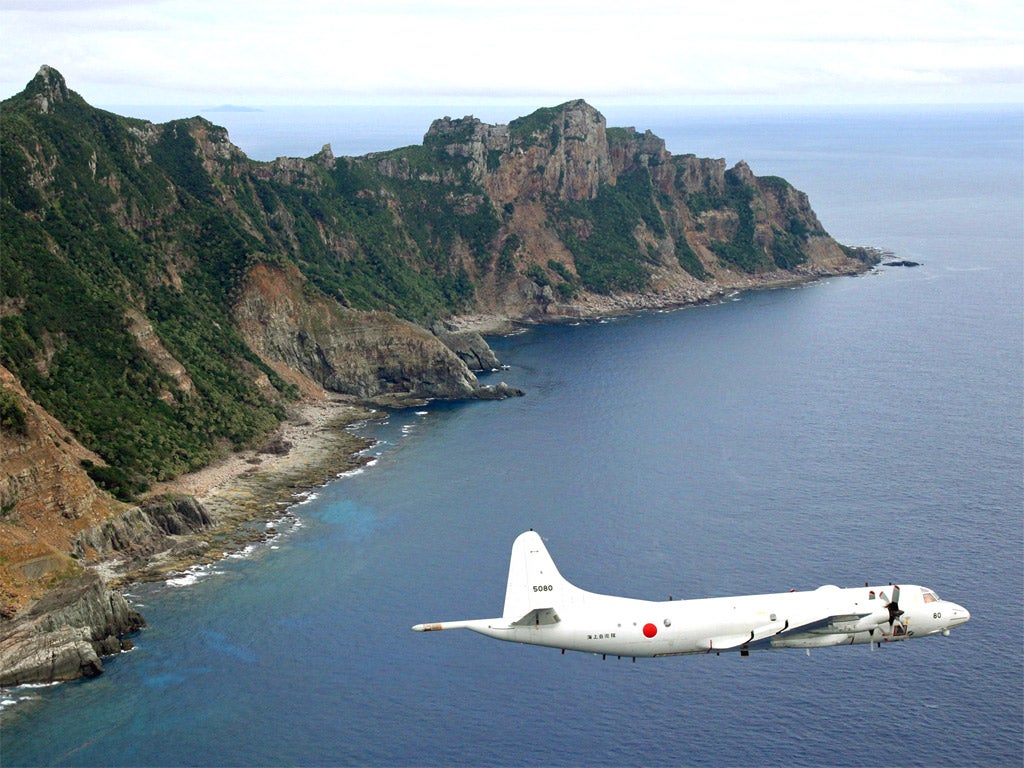China fighter jets raise tensions in air defence zone row
Early warning aircraft been sent into air defence zone after US, South Korea and Japan challenged Beijing by sending jets through the airspace

China has dispatched fighter jets and an early warning aircraft to patrol its newly declared maritime air defence zone, inflaming tensions over disputed regions of the East China Sea.
The move came days after the US, South Korea and Japan all sent military aircrafts through the airspace, challenging rules Beijing says it has imposed upon the area.
Without prior notice, Beijing began demanding on Saturday that passing aircraft identify themselves and accept Chinese instructions or face consequences.
But when tested just days later by US B-52 flights - with Washington saying it made no effort to comply with China's rules, and would refuse to do so in the future - Beijing merely noted after the event that it was aware of the flights and taken no further action.
China's air force sent the warplanes on normal air patrols in the zone on Thursday, the Xinhua agency reported, citing air force spokesman Shen Jinke. He described the dispatch as "a defensive measure and in line with international common practices” in the Xinhua report.
He said: “China's air force is on high alert and will take measures to deal with diverse air threats to firmly protect the security of the country's airspace.”
A patrol also took place when the zone was declared on Saturday.
The report did not specify exactly when the flights were sent or whether they had encountered foreign aircraft.
The US, Japan and South Korea have said they have sent flights through the zone without encountering any Chinese response since Beijing created the area last week.
While China's surprise announcement to create the zone initially raised tensions in the region, analysts say Beijing's motive is not to trigger an aerial confrontation but is a long-term strategy to solidify claims to disputed territory by simply marking the area as its own.
China's lack of efforts to stop the foreign flights - including two US B-52s that flew through the zone on Tuesday - has been an embarrassment for Beijing.
Some Chinese state media outlets yesterday suggested Beijing may have mishandled the events
“Beijing needs to reform its information release mechanism to win the psychological battles waged by Washington and Tokyo,” The Global Times, a nationalist tabloid published by the Communist Party's flagship People's Daily, said.
South Korea's military said its planes flew through the zone this week without informing China and with no apparent interference.
Japan also said its planes have defied Beijing by been continuing to fly through it after the Chinese announcement, while the Philippines, locked in an increasingly bitter dispute with Beijing over South China Sea islands, said it too would reject China's declaration.
The zone is seen primarily as China's latest bid to bolster its claim over a string of uninhabited Japanese-controlled islands in the East China Sea - known as Senkaku in Japan and Diaoyu in China.
Beijing has been ratcheting up its sovereignty claims since Tokyo's nationalisation of the islands last year.
Additional reporting by agencies
Join our commenting forum
Join thought-provoking conversations, follow other Independent readers and see their replies
Comments
Bookmark popover
Removed from bookmarks